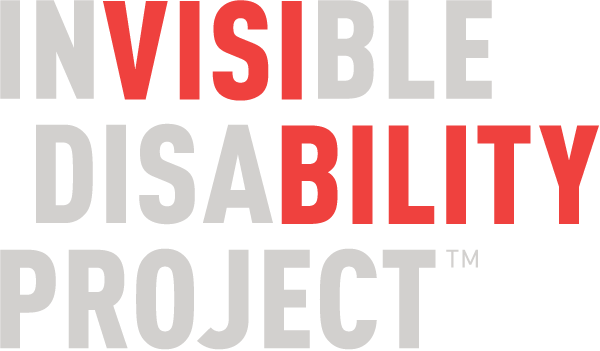Calling Out Ableism Just Got Easier
Linda Williams, Ph.D. and Monica Slabaugh
Author’s note: Discussing ableism is not trivial. It’s complex. It has a deep history, and it is still evolving and emerging as a cultural notion. So, it’s hard to talk about. There are dozens of prequels to this article about ableism — and we will write them. But for now, we decided to start here.
What is Ableism?
That’s a good question. Ableism is deeply rooted in our cultural concepts. Meaning, not just what we think about, but how we structure our thinking. And, how we even think about our thinking. Like many deeply rooted things, ableism is difficult to sum up in one succinct definition, partly because there are so many points of entry. But we can start by observing something as simple as this riddle to exemplify just how ubiquitous, and rather innocent, ableism can be:
What appears when we sit, but disappears when we stand?
The solution to this clever puzzle relies on an implicit bias: every body is able to sit and stand. And as the little puzzle relies on a sense of normal bodies and minds for its solution, so does the everyday reckoning between person and person, and person and industries, education, policies, law and culture. But how is ableism actually defined?
Stated simply, Ableism is discrimination or bigotry against people considered disabled by mainstream society.
But it’s so much more than that. The notion of disability as relevant within our society seems distant or non-existent. Of course, non-existent unless one is disabled.
So Where Is Ableism?
Everywhere — to be precise. Ableism can be hidden and silent, or obvious and loud. It is in the language we use and do not use. It is evident in the lack of thoughtful design of most everyday things — even things designed for diverse bodies and minds. It is in our educational systems, medical practices, social policies, and our laws. Ableism is evident in charitable events that support apparent and non-apparent disabilities. Ableism can be felt closer too, within our personal and family relationships.
How Ableism Performs
No matter how ableism shows up, it is maintained by a cultural criterion that centers on able bodies and minds as the point of reference for most things. As an example, when we speak of disability, we first notice what is different about a body or mind. We notice what is not working, or what is too slow to keep up. And when disability is non-apparent, we reach for the “low-hanging fruit” biases to explain “difference”. We say, “He is lazy, unmotivated; not an innovator, or an achiever.” We say, “He’s a bully.” And when disability is acknowledged, it is constantly referenced by its relative distance from normal. The demands placed on diverse bodies and minds are demands that attempt to bring disability closer to an idealized “normal” — rather than what may be equitable. Ableism seems to declare, “Let’s change disability so that it conforms to the cultural ideal, and so we can comfortably live in a fanatical, depersonalized fantasy about our bodies and minds.”
Calling Out Ableism First
First, let’s think about the relationship between ableism and disability differently. To do this, let’s borrow a concept from visual artists, who see the world around them differently using negative space. If the visual artist desires to draw a chair, then the spaces between the spindles, back, and legs are meaningful and are drawn first. The artist acknowledges that the space around the chair is vital to the emergence of the chair itself. To radically change the conversation around disability — we have to first call out the ableism that exists between the spaces around diverse bodies and minds. The shift happens easily when we call out ableism first — before we are forgotten by systems and structures that use disparaging language, point, stare, blame, neglect, or summarily erase us. Ableism keeps diverse bodies and minds voiceless, insignificant, and inconvenient — unless it is called out first.
Here’s the Card
Invisible Disability Project designed a card, inspired by Adrian Piper’s My Calling (Card), specifically to call out ableism before we talk about diverse bodies and minds as an inconvenience to any given structure or relationship. The card does not engage the fantasies of normal. It engages offensive, discriminatory behavior directly by alerting an individual or group to the presence of ableist attitudes and behaviors. And it goes like this:
“Dear Friend,
That thing you just did — that was ableism.
I am sure you did not realize this when you made/laughed at/agreed with that ableist remark, or behaved in that ableist manner. Like racism, sexism, and elitism, ableism is a cultural bias that impacts disabled peoples’ everyday lives. For example, being called a “retard”, “lame”, or “crazy” is offensive to people like me and my friends. Instead, we need safe and accessible spaces in the absence of ableist assumptions for those with no seemingly obvious disability, like mobility, hearing, visual, or affective impairment or chronic illness. I can’t always alert or educate people about my non-visible disability. If I do, it is often considered malingering or controlling, so, instead, I distribute these calling cards to signal when ableist remarks/behaviors arise.
If this card causes you discomfort, imagine how much your ableism is causing me discomfort.”
Reflecting
For those of us reading this article who already get why the opening puzzle is ableist: this call out will feel liberating — a reclamation of voice and centering, a validation of self and space. For those of you who still don’t see why the opening puzzle is ableist: expect to feel highly inconvenienced when you receive this calling card in the near future.
*Answer: Lap




